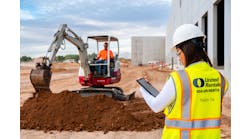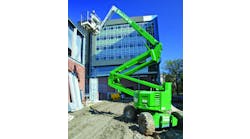By now it's clear that this recession is going to be here for a while and business isn't going to just roar back real soon. Even if legislation to revive the economy works, it's going to take a while and it won't be “business as usual,” which probably means your approach to business shouldn't be “usual” either.
Just as all rental businesses are different, every company needs to find its own response. There is no “one size fits all” solution.
I recently dropped in on National Lift Truck in the Chicago area and spent a morning with Jim Dietz, the company's vice president and general manager. One of Dietz' solutions is to get out of his office and go call on customers. He decided that rather than sit “upstairs” dealing with administrative and personnel issues, lawyers and bankers, he wanted to stimulate sales and rental activity by going out and calling on customers himself. He is finding customers appreciate having somebody from upper management take the time to visit them and he was able to convey to them how much their business means to his company. He also is finding that by communicating on an executive-to-executive or “executive-to-owner” basis, a new level of communication develops. The visits also give him a chance to hear what customers themselves are saying about the current economic climate, and an opportunity to ask candid questions about the service National Lift Truck offers and what those customers really want from his company.
Another owner I spoke with recently is doing the same thing, partly because he had to downsize his staff and felt he needed more sales coverage and decided to try it himself. He is finding the renewed customer contact invigorates him in a way he didn't expect, giving him some valuable new ideas on how to improve customer service. He found himself talking with customers he hadn't communicated with in a long time, if ever, and this contact strengthened existing bonds. He even resolved that after business improves and he can afford to increase the size of his sales staff, he would continue to visit with customers on a regular basis.
There are many different approaches to improving business during this trying time. We all remember the recession in the early part of this decade and while business eventually turned around, a major contributing factor was the changes rental companies made to operate more efficiently. A similar cycle is going on now, and once again, adjustments are necessary. Getting out from behind your desks and interfacing with customers is a good way to begin to figure out what changes are needed.
You may recall a few years ago we wrote an article on Midwest Aerials & Equipment and CEO Dan Tumminello, who always told his sales people he didn't expect to see them around the office much. “Get out of the office, get on the jobsite,” he'd tell them. “Get your shoes dirty.” One of the reasons he was believable was because Tumminello was out on the jobsites himself, even as principle owner. Seems to me like sound advice.
This issue is our annual aerial safety issue and the fact that this is now an annual focus for RER is an indication of how seriously we think safety on aerial work platforms should be taken. Although the aerial rental business is obviously soft right now, this segment of rental business has grown dramatically during the past decade and from what I've seen in the rental industry, attention to aerial safety has been taken very seriously and safety practices are closely adhered to by a high percentage of rental companies.
But the fact that serious and even fatal accidents still occur on aerial work platforms shows that safety can never be taken for granted and is still not taken seriously enough. We still hear people say that their minimal attention to customer safety is good enough because they don't have big aerial rental fleets, just a few units. I shouldn't even have to say it, but all it takes is one aerial unit and one rental company that doesn't follow proper aerial safety procedures, or one rental to one customer without proper training to result in an injury or death.
The information we offer in this issue is just a drop in the bucket of the aerial safety information that needs to be communicated. But in our opinion, any contribution to safety awareness is valuable. If this issue inspires one rental company and one customer to do a better job, it will be well worth the effort.





